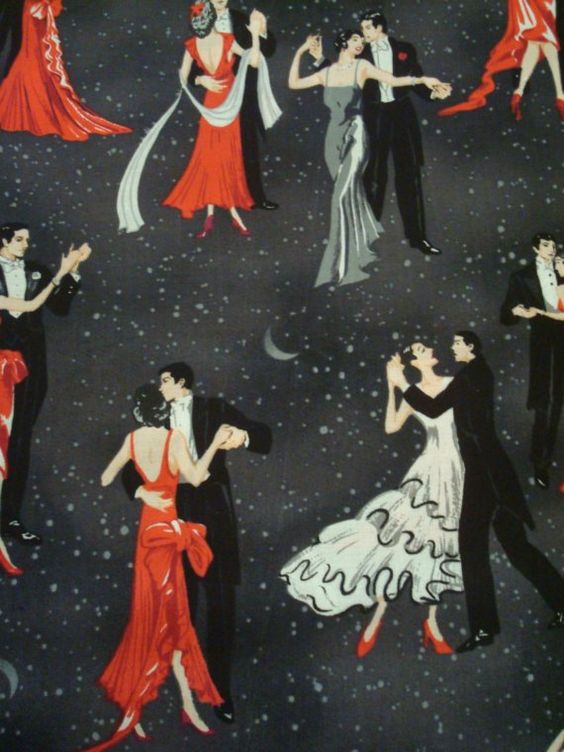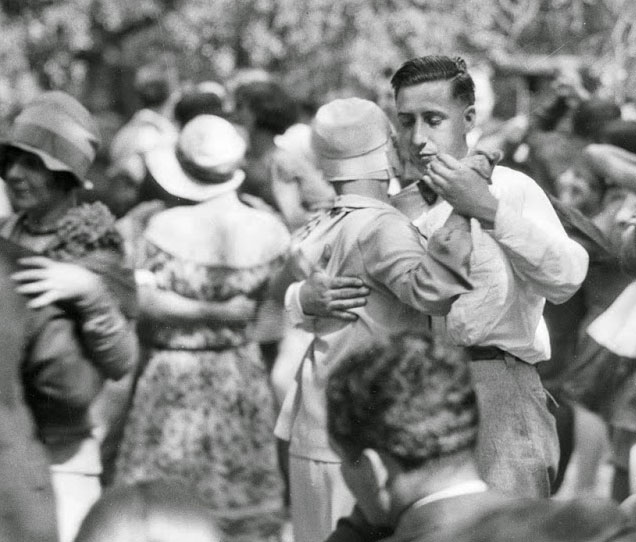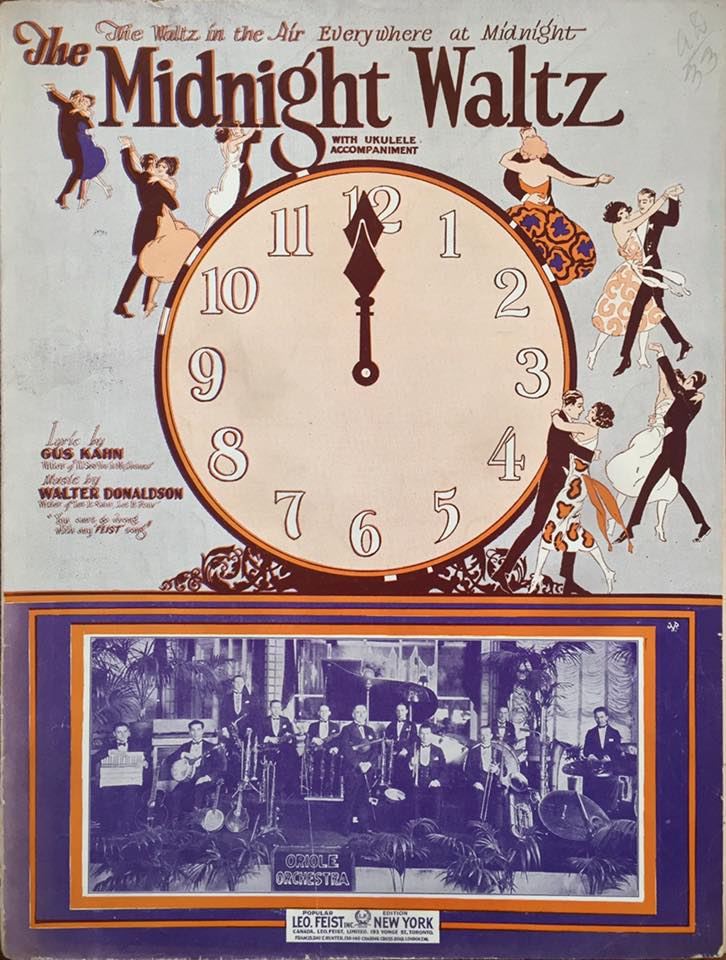
In this period, waltzers used the very close Jazz Age embrace and as with most of the other ballroom styles of the time, the partners seldom left their close embrace. The underarm turns and the like, which are popular today were practiced primarily by professional exhibition dancers and not social dancers. With the partners in the embrace, steps were small and the dance was fairly contained and restrained, and generally did not display the sense of swooping and broad motion that modern competition ballroom Waltz now has or the high-speed, rapid rotation of the Viennese Waltz.
The Modern Waltz was elegant, romantic and quite intimate and like most of the ballroom dances of the era, was a conversation between partners, with little concern for putting on a show for any external audience.
Waltz Timing
The Waltz is in 3/4 time. There are three beats to every measure, and in a waltz, the first
(TAKE SMALL STEPS!)
1 Forward with the left
2 Forward with the right
3 Bring the left next to the right
4 Back with the right
5 Back with the left
6 Bring the right up next to the left
However, if you do this in the current style as an actual box, with equal sides, long steps and 90 degree angles, you're missing the point. Don't think "box" think "back and forth sway". With each step, turn a bit, side step a bit, cross-step a bit - rove all over the floor (but more or less in line-of-direction) and don't worry too much about exactly where your feet end up, so long as you keep on the beat and off your partner's toes and don't bump into your fellow dancers. And of course, in the free flowing dance of the Jazz Age, you can at any moment revert for a while to an old-fashioned pivot Waltz, and then switch back just as quickly to a more modern step - because it's the Jazz Age, and that's just how it is.

As it speeds up it can become essentially the partners doing a sequence of: 1-2-3 the Leader, with a long first step passes in front of his partner while his partner pivots in place - followed on 4-5-6 by the Follower taking the long left foot stride while the Leader pivots. The pivot can be an actual pivot with the dancer simply rotating in place, but is more often a series of small steps, marking time in place while turning.
The "Reverse" turn is a little less intuitive, and may take some more practice. The key to this turn is the left foot. Instead of stepping forward on the first beat, it steps back, behind the right. Then the right moves forward slightly, carefully avoiding stepping on the partner's toes. Reverse turns are a nice variation if you can manage them smoothly, but not essential.

But if all that ONE-two-three stuff is just not working for you, in the Jazz Age there is no dance to which you can't just walk.
The Walking ("Canter") Waltz
(Also "Lame Duck Waltz")
"The Canter Waltz has been revived and presents an opportunity to show the use of "direction" in the straight backward and forward series of walking steps.
This dance is walking to waltz time but walking most quietly and gracefully. There are two steps to the three counts of music. Step forward on x and make the second step between the 2 and 3 count. Give the first step the accent, although the steps are almost of the same value.
It may, perhaps, help the student practicing alone with the aid of the victrola to count 1-&, 2-&, 3-&, making the second step on the second &, until able to do the step smoothly."
(Dancing Made Easy, Coll, 1922)
In teaching this step, I tell people to step on the strong first beat of the Waltz phrase, then, without changing weight bring their trailing foot up on beat 2-3 and do a slight rise, then on the next down beat, step out with the trailing foot and repeat. It really is just Step-on-the-downbeat, with the other foot wasting time until its turn to step.
1 Step Left
2-3 Slide Right up behind Left with a slight rise
4 Step Right
5-6 Slide Left up behind Right with a slight rise
This step is generally danced in a linear fashion, backing the lady and then perhaps, out of a sense of fairness, pivoting so that the man is backing. It could also be danced in a lazy box-step or you could throw in some of your favorite Foxtrot variations to liven it up a bit.
Even if you are an experienced dancer, and master of the most demanding forms of Waltz, I highly recommend you add the walking Waltz to your tool-box in case you find yourself dancing with someone who has never learned to Waltz. You can teach this step to anyone with a rudimentary sense of rhythm in about thirty seconds, which means that rather than three and a half awkward minutes of stress and frustration, you will enjoy a congenial though simple dance, and put off intensive instruction to a more appropriate time.
The step-on-the-downbeat style isn't just for those who can't quite master the regular Waltz step. It is also deuced handy when trying to dance to an ultra-fast Musette Waltz such as the Parisians tend to favor.
